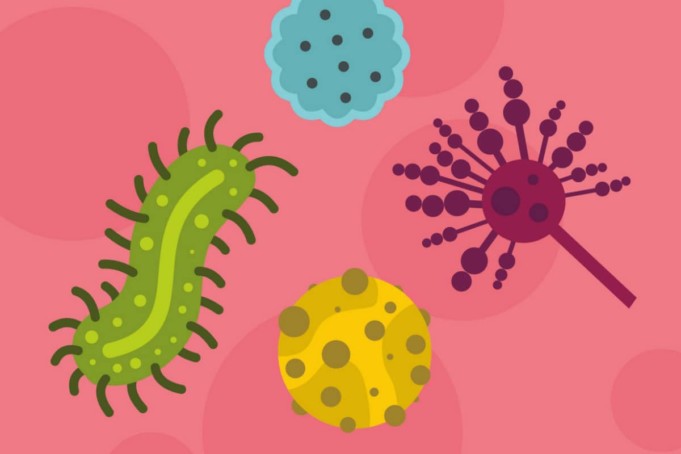Pathogens are organisms that trigger diseases. The human body is generally full of microbes. Nonetheless, microbes only threaten when the immune system is compromised or when they gain access to a sterile part of the human body.
A host is required for all pathogens to thrive. As soon as a pathogen gains access into a host’s body, it avoids immune responses and replicates using the body’s resources.
There are a few ways that pathogens can be transmitted. Pathogens may be transmitted a few ways, depending on the form.
They can be transmitted by skin contact, body fluid, air pollutants, contact with fecal matter, and contact with surfaces touched by an infected individual.
Types of pathogen
While there are various pathogens, the four most common forms will be discussed, and they include the following:
Viruses
Viruses are composed of genetic code, such as RNA or DNA. When a person is infected, the viruses invade the body cells, using parts of the host’s cell to duplicate. This allows the virus to multiply and produce more viruses.
These new viruses leave the host cell after the replication cycle is over. This typically destroys or damages the infected cells or kills them.
Some viruses left in the body remain dormant until they multiply and repeat the cycle all over. An infected person who may seem to have recovered from the infection would get sick when the duplication process starts again.
Viruses can’t be eradicated with antibiotics, and it isn’t an effective form of treatment for viral infections. Nonetheless, antiviral medications can be administered to manage the condition, depending on what viral infection a person has.
Bacteria
These are microorganisms that comprise a single cell. They come in different shapes and sizes. They can also survive in any given environment, including inside and outside the human body. Luckily, not all bacteria trigger infection.
Humans are susceptible to bacterial infections when a virus threatens the body’s immune system. This can make benign bacteria turn pathogenic.
Bacterial infections can be treated with the use of antibiotics. Some bacteria strains have grown some resistance to antibiotics, and this has made treatment challenging.
According to World Health Organization, this can occur naturally and be triggered by using too many antibiotics.
Fungi
Earth is covered with several million types of fungal species. However, about 300 of them can cause sickness.
We can easily find fungi in just about everywhere around us, including outdoors, indoors, and on our skin. Infections are also common when they grow excessively.
Fungi cells comprise a nucleus and several other components shielded by a membrane and a cell wall. Also, the structure of fungi makes it hard to kill them.
New strains of fungal infections, including Candida aurus, prove highly harmful, prompting further research into fungal infections.
Parasites
Parasites are microorganisms that live inside or on a host. Although parasitic infections are more common in tropical and subtropical areas, they can develop anywhere.
Three types of parasites can cause human disease, and they include:
- Protozoa: These are single-celled organisms that can survive and reproduce in the body
- Helminths: These are larger, multi-celled organisms that can survive and both inside and outside the body. They are commonly referred to as worms
- Ectoparasites: These are parasites that can survive on the skin of a host. They include insects such as mosquitoes, lice, fleas, and ticks. They can also spread through contaminated soil, food, water, or blood.
Diseases caused by pathogens
Pathogens can trigger several diseases with varying degrees of severity and transmission range.
Let’s consider some diseases caused by different pathogens:
Viruses
Some infections can be caused by viruses, with many of them being very contagious. The following are examples of viral complications:
- Common cold
- Chickenpox /shingles
- Meningitis
- Flu
- Measles
- Warts
- Hepatitis A, B, C, D, E
- Oral and genital herpes
- Yellow fever
- HIV and AIDS
- Dengue fever
- Viral gastroenteritis, including rotavirus and norovirus
Bacteria
These are some types of bacterial infections:
- Lyme disease
- Strep throat
- Gonorrhea
- Urinary tract infection (UTI)
- Bacterial meningitis
- Cellulitis
- Tuberculosis
- Bacterial gastroenteritis, such as E.coli infection or salmonella food poisoning
Fungi
Some well-known examples of common fungal infections include:
- Vaginal yeast infections
- Thrush (candidiasis)
- Jock itch
- Onychomycosis (fungal nail infections)
- Ringworm
- Athlete’s foot
Parasites
Parasites are prevalent, and they can also cause several health complications, including:
- Malaria
- Giardiasis
- Trichomoniasis
- Intestinal worms
- Pubic lice
- Toxoplasmosis
How to protect yourself against pathogens
Below are easy steps to take to protect yourself from being affected by pathogens:
- Have your hands washed and rinsed often
- Get vaccinated, and be sure vaccinations are updated
- Ensure to cook and store your foods properly
- Don’t share utensils or drinking glasses
- Maintain safe sex
- Avoid insect bites
- Be sure not to share personal items like combs, toothbrushes, or razors
- Remain indoor when you get sick and display symptoms like diarrhea, fever, or vomiting
Conclusion
We easily fall sick when our body becomes exposed to pathogens. This isn’t the case if our immune system is strong enough to fight against these pathogens and the diseases they cause.
There are available treatments for most of the health complications caused by these pathogens. However, viral infections that are untreatable can be managed easily.












